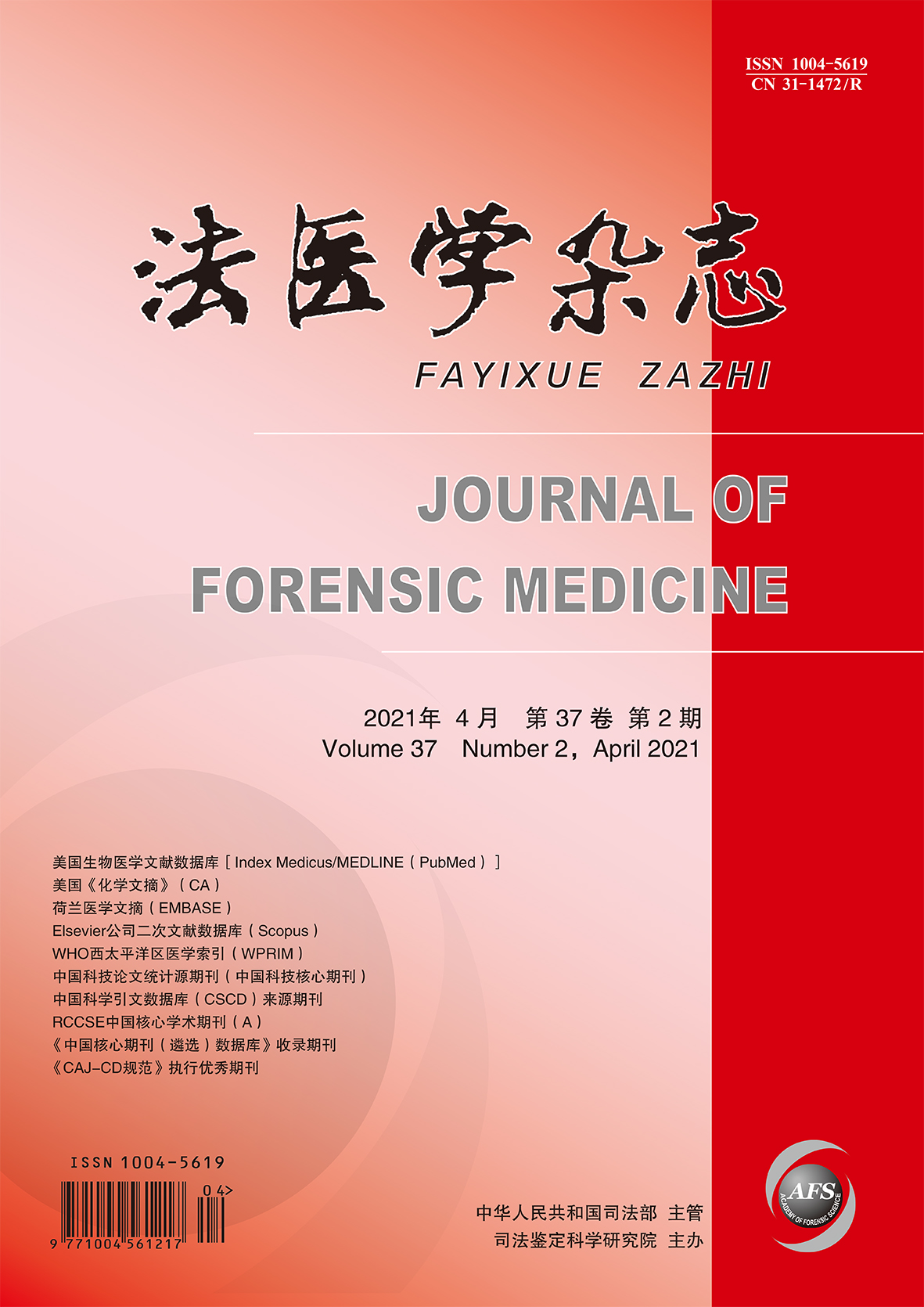|
|
Metabolomics Changes of Serum and Tissues in Mice Died of Acute Tetracaine Poisoning
LIU Wen-qiao, BAI Rui, MA Chun-ling, et al.
2021, 37(2):
166-174.
DOI: 10.12116/j.issn.1004-5619.2020.401006
Objective To study the changes of metabolites in serum and tissues (kidney, liver and heart) of mice died of acute tetracaine poisoning by metabolomics, to search for potential biomarkers and related metabolic pathways, and to provide new ideas for the identification of cause of death and research on toxicological mechanism of acute tetracaine poisoning. Methods Forty ICR mice were randomly divided into control group and acute tetracaine poisoning death group. The model of death from acute poisoning was established by intraperitoneal injection of tetracaine, and the metabolic profile of serum and tissues of mice was obtained by ultra-high performance liquid chromatography-electrostatic field orbitrap high resolution mass spectrometry (UPLC-Orbitrap HRMS). Multivariate statistical principal component analysis (PCA) and orthogonal partial least square-discriminant analysis (OPLS-DA) were used, combined with t-test and fold change to identify the differential metabolites associated with death from acute tetracaine poisoning. Results Compared with the control group, the metabolic profiles of serum and tissues in the mice from acute tetracaine poisoning death group were significantly different. Eleven differential metabolites were identified in serum, including xanthine, spermine, 3-hydroxybutylamine, etc.; twenty-five differential metabolites were identified in liver, including adenylate, adenosine, citric acid, etc.; twelve differential metabolites were identified in heart, including hypoxanthine, guanine, guanosine, etc; four differential metabolites were identified in kidney, including taurochenodeoxycholic acid, 11, 12-epoxyeicosatrienoic acid, dimethylethanolamine and indole. Acute tetracaine poisoning mainly affected purine metabolism, tricarboxylic acid cycle, as well as metabolism of alanine, aspartic acid and glutamic acid. Conclusion The differential metabolites in serum and tissues of mice died of acute tetracaine poisoning are expected to be candidate biomarkers for this cause of death. The results can provide research basis for the mechanism and identification of acute tetracaine poisoning.
Related Articles |
Metrics
|


